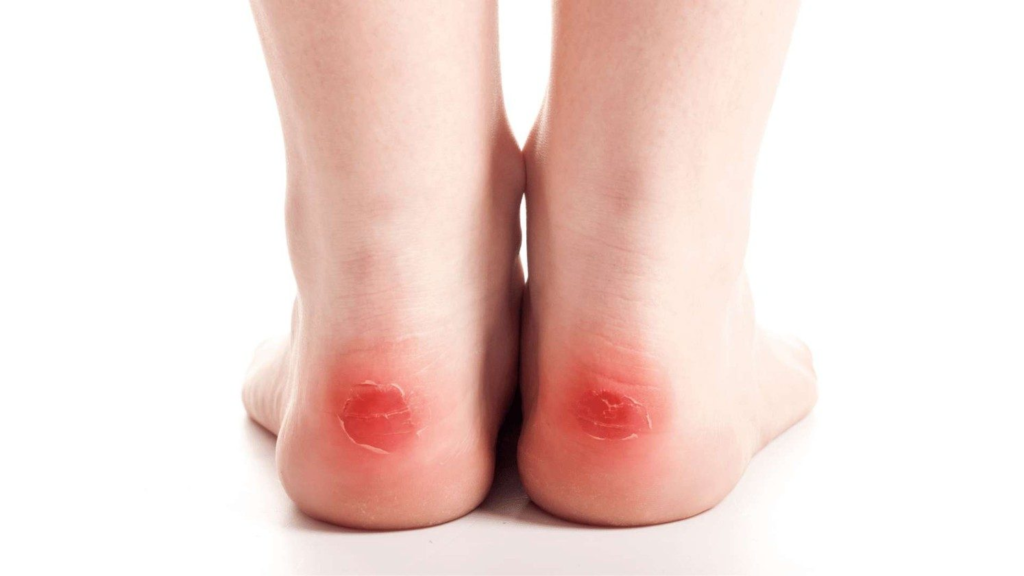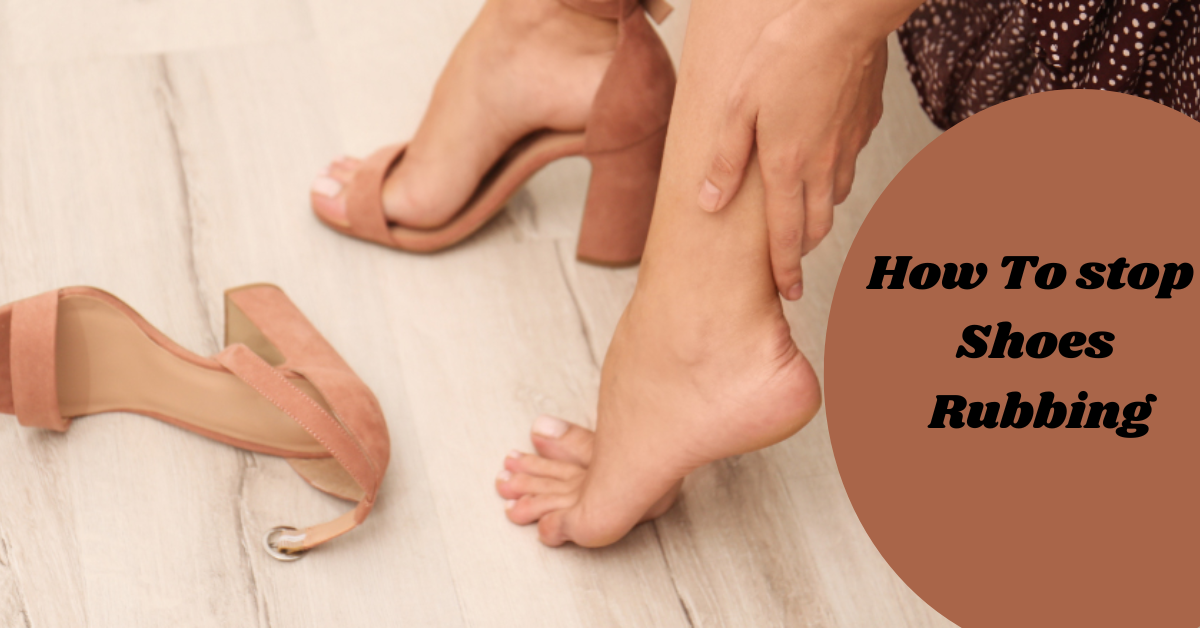The uncomfortable friction of your shoes rubbing against your toes turns a delightful outing into an agonizing experience. If you’ve ever found yourself in this predicament, you know how quickly joy can transform into irritation. Shoes that fit well and feel comfortable are essential not just for our style but also for our overall foot health.

we’ll explore practical solutions to help you stop shoes rubbing on toe and reclaim your comfort. From simple adjustments to clever hacks, we’ll provide you with the best tips and tricks that will have you walking confidently again in no time. So lace up those kicks as we dive into a world where footwear woes become a thing of the past.
How to Stop Little Toe Rubbing in Shoe
One effective way to prevent shoes from rubbing on your little toe is to focus on selecting the right fit. Often, people opt for shoes that are aesthetically pleasing without considering how they conform to their foot shape. When shopping, look for a wider toe box and ensure there’s enough space for your toes to wiggle comfortably.

If your little toe is rubbing against the shoe and causing discomfort, there are a few things you can try to alleviate the issue:
Properly fitting shoes
When shoes rub against your little toe, it can lead to painful blisters and long-term issues like bunions or hammertoes. Many people overlook this critical aspect of shoe shopping, often choosing style over fit. However, understanding how a well-fitted shoe should feel can make all the difference, a good benchmark is ensuring there’s about a thumb’s width of space from your longest toe to the end of the shoe.
Adjust lacing
A common issue many face is the pinching effect caused by improper lacing techniques. To alleviate this, consider experimenting with different lacing styles like the lace lock method which brings additional security and reduces excess movement that may lead to friction on sensitive areas like your toes.
Also see this article for your more information:https://shoesvisionhub.com/sleep-comfortably-in-a-walking-boot/
Use protective padding
Protective padding can be a game-changer when it comes to alleviating discomfort caused by shoes rubbing on your little toe. Investing in high-quality protective pads can not only enhance your comfort but also safeguard against blisters and calluses that often develop from friction.
Try toe separators
Trying toe separators a simple yet effective solution that promotes a more natural foot alignment and reduces friction between your toes.
Choose the right socks
The fabric and fit of your socks play a pivotal role in how well they interact with your footwear. Opt for moisture-wicking materials like merino wool or synthetic blends that not only keep your feet dry but also create a softer barrier against friction.

Break-in Your shoes
Breaking in new shoes can often feel like a daunting task, especially when those stubborn seams start to rub against your little toe. The discomfort experienced during this period isn’t just a simple annoyance, it can transform into blisters or calluses if not addressed properly.
DIY Shoe Stretching
If your shoes are rubbing against your little toe, don’t resign yourself to discomfort, DIY shoe stretching can offer a simple yet effective solution. One popular method involves using a mixture of water and isopropyl alcohol, which softens the leather or canvas when applied generously to the problem areas.
Warm Water Stretching
Warm water stretching is an innovative approach that enhances flexibility while providing the soothing benefits of heat. Imagine stepping into a warm pool or bath, where the gentle buoyancy supports your body and allows for deeper, more relaxed stretches.
Moisturize and Wear Thick Socks
Integrating a moisturizing routine into your foot care regimen can work wonders. Applying a rich, emollient cream to your feet not only helps soften the skin but also creates a barrier that reduces friction between your foot and shoe.
Thick socks serve as an excellent defense mechanism against tight-fitting shoes. They act as buffers that protect delicate areas like the little toe from being pinched or rubbed raw.
Tape or Bandage
When it comes to alleviating discomfort from shoes rubbing against your little toe, the choice between tape and bandage can play a crucial role. Tape, particularly medical or kinesiology tape, offers a flexible option that molds to the contours of your foot. This adaptability ensures that the protected area stays snug without bulkiness, allowing for greater freedom of movement.
What are the Main Causes of Toe Blisters?
Toe blisters often emerge as an unpleasant consequence of friction, particularly when shoes rub against your little toe. This can happen due to poorly fitting footwear that constricts or pinches the toes, creating constant irritation during movement.
Wearing shoes that lack adequate support or cushioning can exacerbate this issue, leading to micro-abrasions on the skin where it meets the shoe. As you walk or engage in physical activities, these repeated motions compound the problem, transforming mild discomfort into painful blisters.
Also see this for your more Guidance: https://shoesvisionhub.com/how-to-clean-bottom-of-shoes-5-best-ways/
Beyond ill-fitting shoes, other surprising factors can contribute to toe blisters. Moisture buildup inside footwear is a significant yet overlooked culprit, sweat-soaked socks create a damp environment that increases friction with every step.
Changes in activity levels such as trying a new sport or embarking on longer hikes can catch your feet off guard and lead to sudden bouts of chafing.

How to make my shoes more comfortable?
Ah, the age-old quest for shoe comfort! If you’re tired of your shoes causing discomfort, fear not – there are plenty of ways to make them feel like heaven for your feet. Here’s the lowdown:

- Choose the Right Size: Ensure your shoes fit properly, allowing about a thumb’s width of space between your longest toe and the shoe end. This can help prevent shoes from rubbing on your little toe.
- Use Shoe Stretchers: Invest in a quality shoe stretcher that can expand tight areas where friction occurs. Focus on sections that affect your little toe for greater relief.
- Add Insoles: Consider orthopedic insoles that provide additional arch support and cushioning, which can alleviate discomfort caused by improper alignment or pressure points.
- Explore Moleskin Padding: Apply moleskin or gel pads directly on rubbing spots inside the shoe. This quick fix creates a barrier, reducing direct contact with sensitive areas.
- Adjust Lacing Techniques: Experiment with different lacing styles to relieve tension across the top of your feet, particularly near the toe box, which may be causing extra pressure on your little toe.
- Break Them In Gradually: When adding new shoes to your wardrobe, wear them for short periods initially instead of long stretches. Gradually increasing wear time helps minimize discomfort over time.
- Opt for Breathable Materials: Choose footwear made from softer fabrics like leather or canvas that conform better to foot shape compared to synthetic materials that may rub harshly against skin.
Creating comfortable footwear isn’t just about making sure they fit; it also involves recognizing how various small adjustments can significantly enhance comfort levels.
Extra tips to stop little toe rubbing in shoe
Here’s some extra tips for you:
- Choose the Right Fit: Ensure your shoes fit properly; there should be about a thumb’s width between your longest toe and the shoe’s end. This space prevents unnecessary friction.
- Opt for Wider Styles: If you find shoes consistently rub against your little toe, consider styles designed with a wider toe box. Many brands offer specialized footwear that accommodates foot shape variations.
- Break Them In Gradually: Instead of wearing new shoes all day, try breaking them in gradually. Short walks can help stretch the material without causing discomfort.
- Utilize Gel Pads or Cushions: Invest in gel pads specifically designed for the toes. These can create a cushioning barrier that reduces friction and offers added comfort throughout the day.
- Keep Feet Moisturized: Dry skin can lead to increased friction and irritation. Applying lotion or using foot creams keeps your skin supple, minimizing chances of rubbing injuries.
These insights encourage proactive measures to enhance comfort, ensuring that the joy of wearing stylish footwear doesn’t come at the cost of painful experiences like little toe rubbing.
Conclusion
Dealing with shoes that rub on your little toe can be both uncomfortable and frustrating, but there are several effective strategies to alleviate this issue. From choosing the right size and style of footwear to utilizing protective pads and insoles, small adjustments can make a significant difference in your comfort levels.
Breaking in new shoes gradually and opting for softer materials can help minimize friction. Remember to regularly assess your shoe collection for wear and tear, as old or poorly fitting shoes may exacerbate the problem.
FAQs
How to stop shoes from rubbing pinky Toes?
To prevent shoes from rubbing against your pinky toes, start by ensuring you have the right shoe size. When trying on shoes, make sure there’s enough space in the toe box for your toes to move freely. A good rule of thumb is to leave about a thumb’s width between your longest toe and the end of the shoe.
How do i stop my toe from Rubbing raw?
To prevent your toe from rubbing raw, first, it’s important to identify the source of the friction. This could be due to ill-fitting shoes that are too tight or too loose. Ensure that your footwear provides enough room in the toe box and is made from breathable materials.

